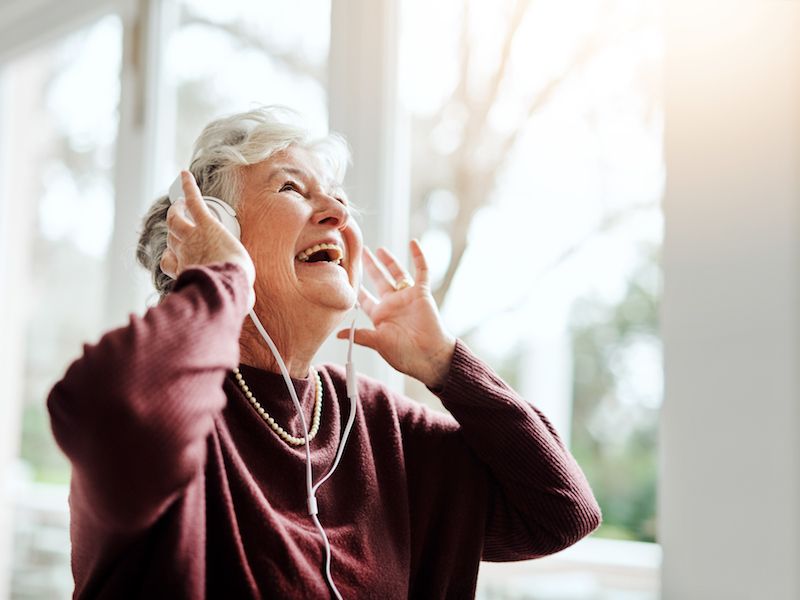
Noise-related hearing loss doesn’t just impact individuals who work in loud environments, like construction workers or heavy metal roadies. Leisure related noise exposure can be just as damaging as work related noise exposure. The most common kind? Loud sounds heard through headphones, whether it be music, gaming, streaming video, or even an audiobook with the volume turned up.
You might not believe your smartphone or tablet can go that loud. But these devices can reach sustained volumes of over 105 dB, which is close to the average human threshold for pain. This is the volume at which noise begins to literally hurt your ears. So what’s the answer for safeguarding your ears against volume related injury.
The volume level here is important. Listen with the volume at or below 60% for 60 minutes or less at a stretch (how long you listen for also matters), this is called the 60/60 rule.
Create a Setting on Your Hearing Aids For Music
Make sure, if you’re wearing hearing aids, you don’t attempt to drown out other noises by turning your streaming music up too loud. Additionally, ask us about how best to listen to music. If you’re a musician or real music aficionado you may have recognized that most hearing aids are created to improve the clarity of voices…not necessarily music. We may be able to make adjustments to lessen feedback and noise while boosting some frequency ranges to enhance the quality of sound when listening to music.
Selecting Headphones
If you don’t have hearing aids, there are many choices for shopping for headphones. There are some things to consider, even though it’s largely a matter of personal preference.
Headphones That go Over The Ears
Over the ear headphones are becoming popular again but you most likely won’t find the old foam covered ear pieces that once came with a walkman. They have a lot of options in style and color, are often endorsed by celebrities, and can be unexpectedly costly. And these headphones go over the whole ear blocking unwanted sound, unlike those old foam ones.
Conventional perception is that these are less dangerous than in-ear headphones because the source of the sound is further from your eardrum. But because the speakers are larger they are often capable of much louder volume. Noise cancellation can be a helpful thing as long as you’re not missing needed sounds like an oncoming car. With that being said, because they block out outside sound, you can normally decrease the volume of what you’re listening to so it’s not loud enough to hurt your ears.
Earbuds
The normal earbuds are widely recognized for poor quality of sound, even though a lot of people still use them because hey, they came with the phone. Especially, with newer Apple phones, it’s just easier to use the earbuds that were provided with the device because it most likely won’t have a headphone jack.
Earbuds also don’t cancel out noise so the drawback is, you tend to crank up the sound level. Once again,, though it’s commonly said that earbuds are a problem because you stick them into your ear so their speakers are very close to your eardrum, volume is the biggest problem.
Isolating or Occluding Earbuds
A lot of people buy earbuds with a rounded, rubbery tip both because they’re more comfortable than standard earbuds and more effective at blocking outside noises. A seal that blocks outside sound from getting in is formed by the rubber tip which molds to the shape of the ear. Not to sound like a broken record, but these types of earbuds have the same drawbacks as the other two (volume is the main problem), as well as carrying the same caution as over-the-ear headphones (they can block out warning sounds). Obviously, these won’t work for you if you use hearing aids.
You may have to try out quite a few pairs before you find headphones that meet your requirements. Your expectations, acoustically, will differ dependant on what kind of usage you normally give them. Listening to your music at a healthy volume and coming across headphones that help you do that is the key.
Don’t Cut Corners When Dealing With Your Hearing
How can you be sure it’s safe? If you use a smartphone, you can get an app for that, you can download the National Institute for Occupational Safety and Health’s free Sound Level Meter app. There are other apps out there, but studies has found that the reliability of these other apps is hit-and-miss (additionally, for unknown reasons, Android-based apps have proven to be less precise). That motivated NIOSH to develop an app of their own. You can measure external sounds using the app, but sounds coming out of your device’s speakers can also be measured, so you will find out precisely how much volume your ears are subjected to. It’s a little bit of work, but putting in place these kinds of protective steps can help protect your hearing.

